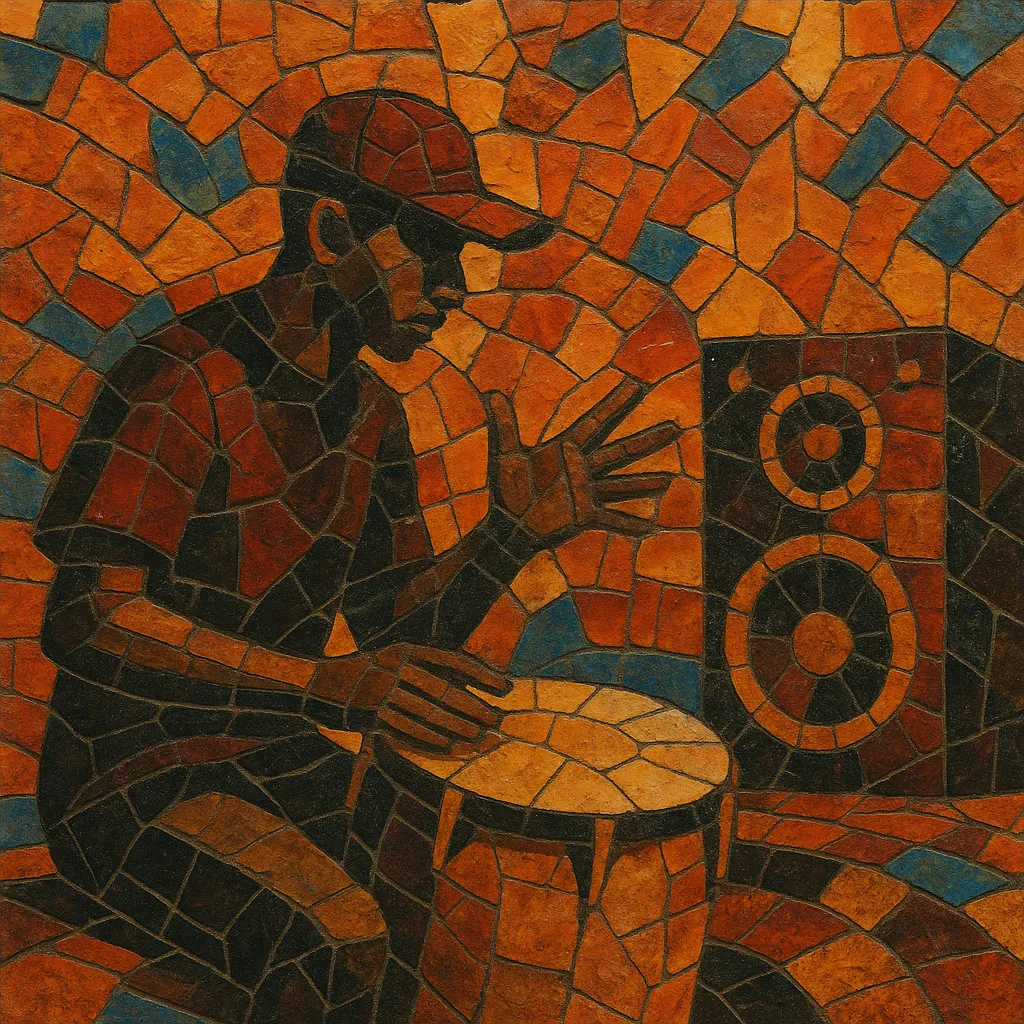Tamborzão is a drum-forward substyle and signature beat within Rio de Janeiro’s funk carioca scene. Its name—literally “big drum”—refers to the heavy, surdo-like kick pattern and layered percussion that drive the music.
Characterized by syncopated 808 kicks, claps, and tambor/surdo samples at roughly 130–140 BPM, tamborzão emphasizes groove, swing, and call-and-response vocals. Productions are typically minimal and loop-based, leaving space for MCs to command the baile (dance party) with chants, crowd cues, and streetwise narratives.
Although often described as a beat rather than a standalone genre, tamborzão became so ubiquitous in the 2000s that it functioned as a recognizable style in its own right, defining the sound of many Rio funk anthems and influencing later Brazilian funk variants.
Funk carioca emerged from Rio’s favelas in the 1990s, heavily inspired by Miami bass and electro, then localized through Brazilian percussion aesthetics and MC-led party culture. As sound systems and crews refined the baile format, producers began layering surdo and tambor timbres over 808 kits, pushing a fatter, more syncopated kick pattern that crowds dubbed “tamborzão.”
By the 2000s, the tamborzão beat had become a default rhythmic grid for Rio funk hits and “montagem” edits. Labels and crews like Furacão 2000 and producers including DJ Marlboro and DJ Sany Pitbull popularized the sound through mixtapes, radio, and live bailes. MC-driven anthems by artists such as Bonde do Tigrão, Mr. Catra, Tati Quebra Barraco, and Deize Tigrona showcased the beat’s raw dance energy and chant-friendly structure.
As funk spread beyond Rio, tamborzão informed new regional and stylistic branches. São Paulo’s scenes adapted the framework into ostentação aesthetics; DJs in Bahia and the Northeast slowed and re-colored the groove into rasteirinha and later cross-pollinated brega funk; and a faster wave culminated in the 150 BPM movement. International attention to baile funk further circulated tamborzão patterns into pop, club, and global bass contexts.
Tamborzão is inseparable from the social dynamics of the baile: community gatherings, dance crews, and the MC as master of ceremonies. Despite periodic media moral panics and policing of funk events, the beat has remained central to Brazil’s club culture, serving as the backbone for multiple waves of Brazilian funk and continuing to influence producers worldwide.


